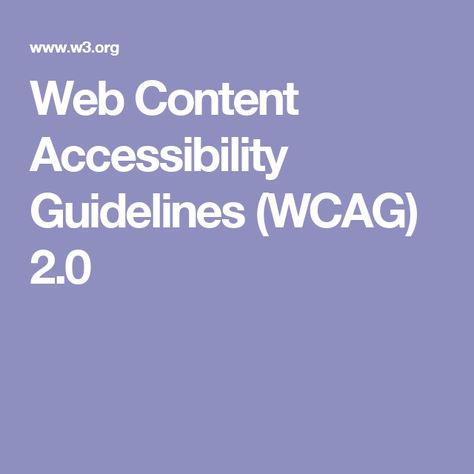Web accessibility for people with disabilities – what is WCAG 2.0.
Over the past few years, the Internet has brought about profound changes in regarding accessibility of information, communication. Nowadays, many official matters are handled through services such as ePUAP, food is ordered by dedicated portals, and watching your favorite movie online is no problem at all. These are significant conveniences that seem natural to us, without which we cannot imagine the modern world.
However, there are people for whom access to such solutions is significantly limited. These are digitally excluded people, i.e., among others, people over 50, people with disabilities, including the visually impaired, the blind, the deaf or those with motor problems, for whom using popular, modern sites is often quite a problem.
However, changes are slowly taking place in this matter, and this is mainly due to the accessibility standard WCAG 2.0. (Web Content Accessibility Guidelines) introduced by the European Union.
In accordance with the Decree of the Council of Ministers of April 12, 2021 All institutions of public administration and entities carrying out public tasks, such as the police, fire departments, hospitals, non-governmental organizations by the end of May 2022 Should adapt their sites to the needs of the elderly and disabled. However, also more and more companies, businesses that dedicate their products, solutions to a wide audience, decide to improve their own websites for digitally excluded people. In general, the basic principles of the standards can become a guideline for creating clear and functional web portals that provide comfort of use.
The main reason for the introduction of the WCAG 2 standard.0 is to abolish barriers to accessing information, to bridge the gap between different audiences. It was developed on the basis of research, consultation and testing with people with disabilities, describes in detail the design guidelines for specific elements of the website. Among them, it is worth paying special attention to such issues as:
- Transparency of the site – visually impaired people navigate the web space with the help of speech synthesizers, reading programs that navigate them through the site accordingly. The most common way to search for information is to set the program to read headlines or link titles. Therefore, it is very important to include a functional search engine, preferably at the top of the site. Equally important is the appropriate structure of the entire website and the clear labeling of individual parts, by giving them a different color scheme or using the possibility of formatting the text by underlining or bolding.
- Appropriate color scheme – Visually impaired people often use magnification software that adjusts the content on the site to suit their size. For this reason, the site should be created using contrasting colors, so that individual parts of the text are clearly visible against the chosen background, so that elements such as the search box and the “Search” button or icon stand out significantly. At the same time, avoid overly aggressive, excessive color schemes and bright colors. Any banners, popups that attack suddenly, striking with their colors, should be removed. You can also introduce facilities such as “aAA” type icons that, when clicked, will give the page the appropriate size. An interesting solution used by many entities is also the creation of an alternative version of the site, to which the user is referred after clicking on an icon with the image of a disabled person. These are very simplified forms, presenting the content itself, avoiding all graphics. They are often created using two main colors, e.g.: yellow lettering on a black background or white letters on a blue background.
- Simplicity and clarity of language – Digitally excluded people include those who are deaf or have hearing problems. Polish is a foreign language for them, which they picked up after mastering sign language. Their vocabulary may be somewhat limited and overly metaphorical or scientific terms may prove too problematic. For this reason, all content on the site should be unambiguous, written with simplicity, without additional verbal embellishments, foreign words.
- Navigation – People with motor problems have limited ability to navigate websites. Some can only move their heads, others have a greater range of movement capabilities. However, dedicating the site to this group as well, it should be designed in such a way that all navigation can be done using only the keyboard.
All willing to check if their service is adapted to people with disabilities or willing to implement the WCAG 2 standard.0 on your site are encouraged to contact ClickMaster USA agency or another company involved in the introduction of WCAG 2.0.
